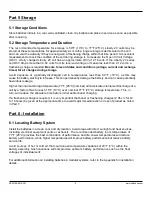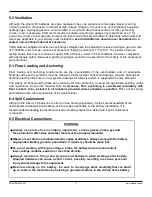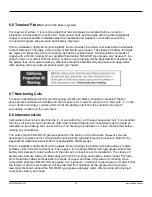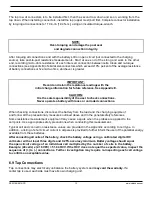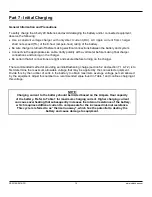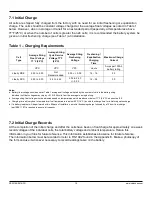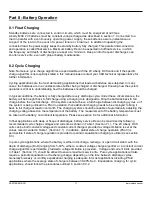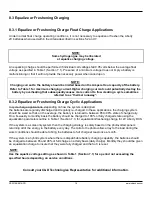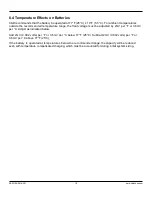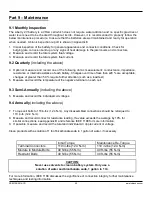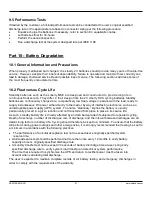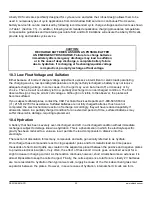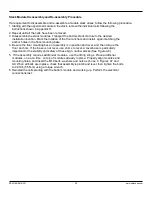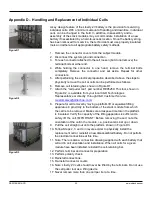
RS02109/0814/CD
23
www.cdtechno.com
10.5 Open Circuit – Late Installations
As soon as a battery is disconnected from a charger, local action (self-discharge) begins. This is caused by
inherent internal losses within the cell. In the case of Liberty 2V cells, a self-discharge is expected to occur at
a rate of “up to 3.0 percent” of full charge per month at 77°F (25°C). Therefore, if cells remain, for whatever
reason, on open circuit (with no charge supplied) for prolonged periods of time, the affected cells may become
sulfated and require corrective action in the form of a freshening charge, see Sections 5.2, 7.1 & 7.2.
10.6 Parallel Battery Strings
When strings of batteries of equal voltage are connected in parallel, the overall capacity is equal to the sum
of the capacities of the individual strings. When paralleling valve-regulated batteries is necessary, the
external circuit resistance should be matched for each battery. A wide variation in battery circuit resistance can
result in unbalanced discharge (i.e., excessive discharge currents in some batteries and less discharge in
others). As a consequence, cell failures in one battery string and the subsequent loss of performance
capacities of that string will result in higher loads in the lower resistance interconnections of some parallel
strings that may exceed the ratings of the battery interconnections and/or cables. C&D recommends
paralleling strings to obtain higher capacity, to increase system reliability and with properly installed
disconnects, perform maintenance on one string at a time.
10.7 High Temperature Operation
Operating a battery at temperatures exceeding 77°F (25°C) will reduce the battery life.
Elevated temperatures accelerate the electrochemical reaction within the lead acid battery.
For additional information, refer back to Section 8.4.

